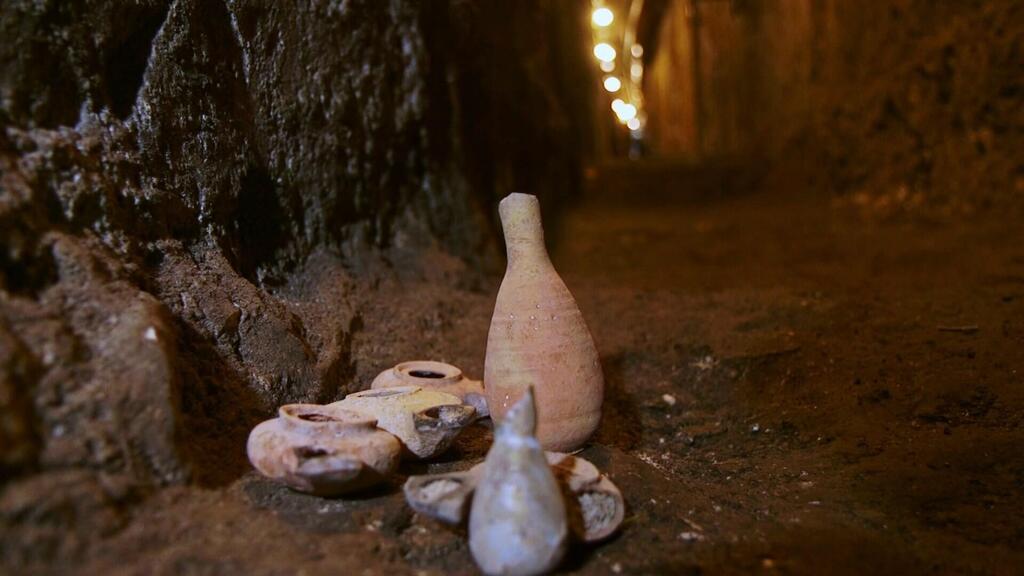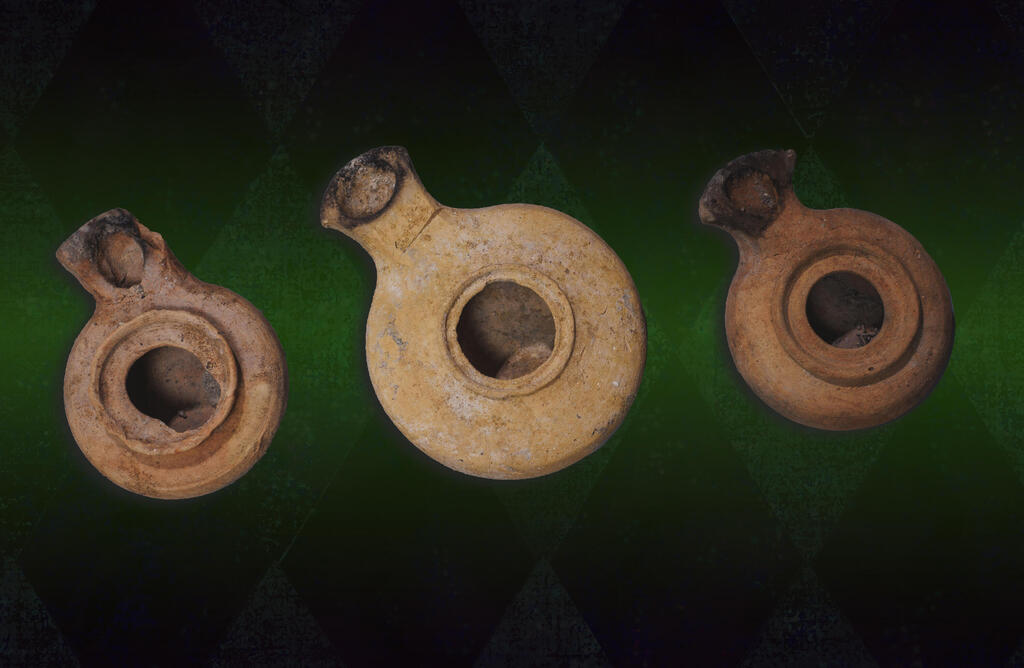Getting your Trinity Audio player ready...
A complete glass vial, grape pips, 2,000-year-old eggshells, and intact clay oil lamps with soot residue are some of the remarkable finds that emerged from a recent excavation in the drainage channel beneath the main street of Jerusalem during the Second Temple period. Conducted by the Israel Antiquities Authority with funding from the City of David, this excavation offers profound insights into the urban pulse of Jerusalem during the final decades before the Temple's destruction in 70 CE.
Excavations under Jerusalem main street
(Photo: Israel Antiquities Authority)
The excavation gradually reveals the waterway that once served as the city's primary underground artery. This channel traversed beneath the vibrant markets of Jerusalem at the foot of the Temple Mount and extended along the entire length of the City of David.
"Into the channel's mouth washed remnants of life from above the main street of Jerusalem, preserved between the channel's walls as they were left with the city's destruction," explained Dr. Ayala Zilberstein, the excavation director from the Israel Antiquities Authority. "Small finds tell us a grand story, from the days of Jerusalem’s prosperity and splendor with its bustling streets, to the city's dying moments during the revolt and its abandonment following the destruction."
Zilberstein added: "Since these channels usually received regular maintenance, the fact that layers of sediment filled this central channel almost halfway up suggests a gradual neglect in the city's upkeep. This neglect and abandonment correspond with the narrative of Jerusalem’s destruction."
In the upper layers of the sediment, excavators uncovered remains from the city's destruction, including intact clay oil lamps dated to the late Second Temple period. The soot remnants on their edges are a testament to the fires that once burned in them. A few meters south of where the oil lamps were found, in an excavation led by Eli Shukron, a Roman sword in a leather scabbard was discovered several years ago. Similar to the sword, it is believed that the oil lamps might have been carried by rebels who found refuge in the channel.
2 View gallery


Antiquities found in the channel under Jerusalem
(Photo: Israel Antiquities Authority)
As the excavators dug deeper, they uncovered a wealth of artifacts attesting to Jerusalem's splendor and wealth during the Second Temple period, when the city was bustling. The manual excavation led by Nissim Mizrahi revealed complete vessels, including perfume bottles and expensive oil containers, most of them made of clay, alongside a delicate glass vial that miraculously survived almost intact.
The initial examination of the ceramic and glass assemblages, conducted by Dr. Yael Gorin-Rosen and Dr. Shulamit Terem, indicated a particularly rich variety of vessel types, some of them rare. "The large variety of vessels accumulated in the drainage channel can bring us face to face with the full service set of Jerusalem’s residents. Unlike the more limited set of vessels typically expected in a single household kitchen excavation, the channel collected vessels from various homes and streets, thus providing a representation of everything the city’s vendors had to offer," explained Zilberstein.
Given the potential inherent in the layers accumulated in the channel, all the excavated soil bags were preserved and sent to the Emek Zurim National Park soil sifting site. Alongside the discovery of colorful coins and beads, the main contribution of the sifting project came from an unexpected direction with the discovery of food remains that helped researchers uncover some secrets of the Jewish kitchen: grape seeds, grain kernels, fish bones, and even eggshells, all of which shed light on the diet of Jerusalem's residents during the city's vibrant days.
The wealth of organic finds, said the Israel Antiquities Authority, led to various laboratory tests to examine the existence of unseen remains. An initial examination conducted by Vitali Sterman and Dr. Yotam Asher of the Israel Antiquities Authority revealed the difference between the layers of the city's active life and the layers that accumulated last. "As we approach the layers from the city's final days, there are fewer and fewer human artifacts, presenting a picture of the city's decline," added Dr. Zilberstein. The important layers will be sampled using innovative methods.
"In these days, when the word 'destruction' takes on a very relevant meaning, it is more important to look back, remember where we came from, connect to our past, and gain a broader perspective on our lives here," Israel Antiquities Authority Director Eli Escusido said. "As part of the new excavation currently taking place near the Western Wall and the City of David, a wealth of findings has been uncovered that presents a magnificent and vibrant city, emphasizing the magnitude of the destruction and understanding of what was lost."





